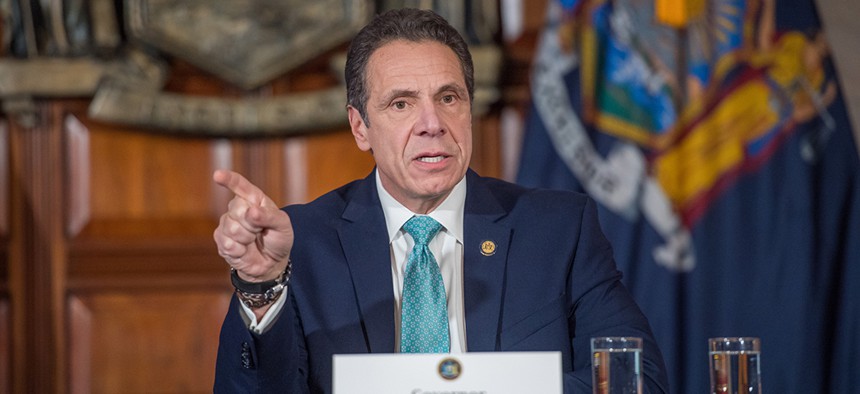Gov. Andrew Cuomo has enormous influence over the state budget process, but there was one negotiating tool that he has reportedly kept in reserve for the second half of the legislative session: the State and Municipal Facilities program, which controls hundreds of millions of dollars in funding for capital projects in lawmakers’ districts.
Lawmakers have voted to increase the program’s funding authority every year since 2013, but Cuomo reportedly left it out of this year’s budget. “The capital budget is not fully included in this budget. That is true,” he told WAMC in early April. “We have more to negotiate on the capital side and we will do that in the coming weeks.” A spokesman for the administration told City & State in mid-May that capital funding remained “subject to negotiations” without elaborating further. But the governor might have his chance to use such funding to gain an edge over lawmakers as they race to reach details on a broad range of issues – such as rent regulations – by June 19.
A new analysis by the Empire State Center for Public Policy examines how the SAM program funded “pork barrel” capital projects across the state in the past year. Lawmakers have voted every year to authorize raising several hundred million dollars in borrowing for the program. Since the program was established in 2013, more than $2 billion in total public debt has been created.
With just two weeks to go before the state Legislature adjourns for the year, it remains unclear whether lawmakers will once again push to authorize more funding for the program. About $1 billion that’s already raised remains unspent and there are concerns among some lawmakers that this funding would be used as a form of leverage by Cuomo, who effectively controls the funding through the Dormitory Authority of the State of New York.
The idea that the governor would dangle money for projects in members’ districts remains on the minds of lawmakers, according to state Sen. Liz Krueger, a Democrat who chairs the Senate Finance Committee. “The governor uses all forms of funding as leverage,” she told City & State on Wednesday. Krueger also said that lawmakers had pushed for capital funding in the budget, but the governor had opted to keep it out.
A spokesman for the governor did not immediately respond to a request for comment.
The lack of transparency over how the funding is allocated however makes it difficult to know how the money is used, according to E.J. McMahon, research director for the Empire Center. While the program has yet to disburse roughly $1 billion, it is not known how many lawmakers have applied for funding – or how many Cuomo is waiting on approving. There is no definitive memorandum of understanding between the governor and lawmakers on how the program should officially function, though lawmakers have agreed to allow more borrowing for the program year after year. “None of this is ever announced or explained,” McMahon said. “But the governor totally controls the spigot on this.” The program is under the control of the Dormitory Authority, whose 11-member board includes seven seats controlled by Cuomo.
The program made up the bulk of $508 million in funding that went to 1,207 projects last year, according to the June 4 Empire Center analysis. This included $250,000 “to construct a cabin” in Irondequoit and $250,000 for a skate park in Islip, and two grants totaling $25 million that Republican state Sens. John Flanagan and Kenneth Lavalle steered towards the State University of New York at Stony Brook during election session last year. In past years, money from the program was used to benefit both the Democratic Assembly majority and the Republican Senate majority. The creation of the fund also coincided with the rise of the Independent Democratic Conference, a group of breakaway Democrats who caucused with Republicans and were rewarded “handsomely” with funding for their districts through SAM, according to Gotham Gazette.
Though Democrats now control both houses of the Legislature, it remains to be seen whether SAM will continue to be utilized by lawmakers and the governor, or whether it will quietly fade away as it funding is depleted in coming years. Representatives for Assembly Speaker Carl Heastie and Senate Majority Leader Andrea Stewart-Cousins did not respond to requests for comment by publication time.
If lawmakers opt to end the annual practice of increasing funding for the program, then they will be paying a price in at least one way by eventually losing what critics call a political “slush fund.”
“The main function of this program is getting state politicians re-elected,” said Ken Girardin, a policy analysis at the Empire Center who wrote the June 4 analysis. “They are not going through the normal budget process and they are not even coming up with the money to pay for these things in the short term. This is a bunch of incumbents passing around a credit card so they can pose with big checks and look good to the voters.”
NEXT STORY: ‘Arena’ is focusing on New York City


